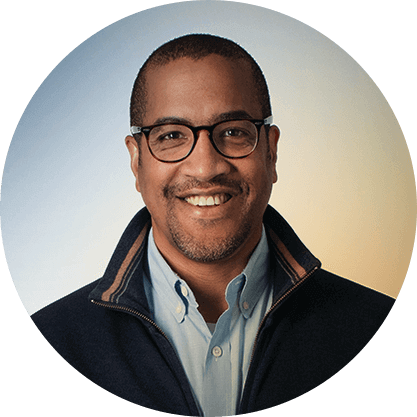George Floyd in Minnesota, Breonna Taylor in Louisville, and Ahmaud Arbery in Brunswick, Georgia: three separate, yet connected tragedies bound together by their impact on African-American lives and American communities. In all three cases, the justice system played a role that instead of imparting fairness demonstrated inherent social injustice – the very antithesis of their ethos and intention.
The resulting reaction has been swift and brutal, protestors imploring that justice be served while also plunging some businesses and communities into yet another chaotic cycle of damage and recovery following a landmark and ongoing cataclysmic health pandemic. Protests have expanded from the impacted cities to a national reckoning across the United States, as well as condemnation of racial intolerance from the international community.

“At the first critical stage of shock and grief, active listening is more important than acting.”
CHIP GROSS
Managing Director, Atlanta
The cost of tragedy feels both monumental and straightforward; yet as conversations unfurl, employees, communities, and corporate leaders are grappling with nuanced questions including “what do these protests mean for our stakeholders” and “what actions do we take to address the injustice that confronting us? What is the best approach to translate outrage into action to make meaningful change? What should be our guide?”
As BrightHouse, we advocate that Purpose – the intersection of one’s unique strengths and a differentiated Role in the World – be that guide. As an organization, your unique strengths shed light on how your company can take meaningful steps that make structural change, and further the goals of increased understanding and reduced likelihood of further tragedy. This ethos can also guide improved behaviors and inclusion practices that help leaders recognize the role they may inadvertently play in exacerbating barriers to racial equality.
Understanding the Role in the World that your company uniquely plays can guide authentic communication and action, forming key messaging that is both meaningful and aligned with your strategic intent, and suggesting potential partnerships that align competencies and generate systemic change for the long-term.
Amplify Your Actions through Relevant Bold Commitments
Drawing on empathy, the kneejerk reaction of many leaders is to express immediate support, to make a statement of solidarity. Which demonstrates good intent, but action often stops there due to lack of understanding the appropriate next steps and/or having the courage or know-how to push large-scale, diversity-enhancing change. To ensure a strategic approach to action, companies should reflect on and embrace Purpose in three ways:
1.Listen, then Issue a Timely Statement of Beliefs
At the first critical stage of shock and grief, active listening is more important than acting. In the context of current events, employees of color and those that traditionally have felt under-represented will be especially vulnerable. Via listening and engaging in meaningful dialog, every organization can better understand how to best support employees, as well as what actions to avoid that might spare an already suffering group of individuals from unintentional, further injury.
Once you’ve listened, work to demonstrate empathy and support by reinforcing your values, bolstering the organization’s commitment to diversity, equity and inclusivity, and engaging the organization through empathy and consistent dialog.
A blog post from Marvin Ellison, the CEO of Lowe’s, is an example of how one leader has expressed empathy rooted in personal and organizational values. It draws on the company’s ethos of helping their customers build a home as a place of safety and comfort while also acknowledging the higher order of social justice that they see as part of their responsibility. Ellison speaks from an authentic heart, beginning with the context of introspection and recounted a personal experience:
“I grew up in the segregated south and remember stories my parents shared about living in the Jim Crow South. During this time of Jim Crow, people of color were viewed and considered second class citizens.
So, I have a personal understanding of the fear and frustration that many of you are feeling. To overcome the challenges that we all face, we must use our voices and demand that ignorance and racism must come to an end. This is a time to come together, to support one another and, through partnership, begin to heal.”
Ellison’s statement is profoundly personal, as well as profoundly empathetic of what his employees, families, and community are experiencing. He then relates it to Lowe’s values and ways they are currently engaged in living those values:
“At Lowe’s, we are committed to helping people make their homes better, and today, we recognize that our homes extend beyond our walls, and into our neighborhoods, communities and country. We take this corporate responsibility seriously, and as we’ve seen through the incredible workers on the frontlines of the coronavirus pandemic, we can meet and overcome tragedy, but only by coming together.”
Others like Jide Zeitlin, CEO of Tapestry, have implored his company to look beyond the short-term impact versus the bigger concern of loss of life. Rather than condemning the damage to several of the company’s brand’s stores during the protests, he noted: “… we can replace our windows and handbags.” Instead, Zeitlin focuses on the loss of life over the preservation of replaceable product – placing value where it should live.
In modeling Ellison, draw on your company’s ethos and values, restate and reinforce who you are at your best; and like Zeitlin, come from a place of empathy to support employees and stakeholders in a relatable and human way.
2.Amplify Your Action through Relevant and Thoughtful Medium-Term Bold commitments
Even with a well-orchestrated and holistic change program, there exists the moment in the middle where change forces are underway, yet substantive outcomes may not feel prevalent. To prolong the tide of support through this ambiguous intermediate period, employ your organization’s Purpose to inform bold commitments that demonstrate intent and guide concrete action.
Bold commitments and Purpose go hand in hand. When Mercedes-Benz articulated its Purpose as First Move the World it activated this Purpose along with a bold commitment to be carbon neutral in German plants by 2022 – a direct action stemming from its role to making change first, and a public commitment to change. The Bank of Montreal committed to double the bank’s mobilization for sustainable finance to $400 billion CAD to deeply live its Purpose to Boldly Grow the Good. BMO re-structured corporate governance to institute leadership for the fund to ensure they helped clients achieve their sustainability objectives.
What might your bold commitments be when it comes to diversity, equality, and inclusion (DEI)? Challenge yourself to make these more than benchmarks: DEI is not about achieving representation numbers, but rather acting in a way that both is and feels inclusive and supportive to stakeholders.

“DEI is not about achieving representation numbers, but rather acting in a way that both is and feels inclusive and supportive to stakeholders.”
ASHLEY GRICE
Chief Executive Officer
Understanding your Purpose means understanding who you are at your very best. Starting with leadership, underscoring what is expected, desired, and required internally and externally throughout the organization. And it should be specific, measurable, and public.
Stumped on where to meaningfully begin? Ask what your organization will do to reduce and eliminate barriers to inequality. As a starting point, take stock of your recruiting and hiring, team composition, reward and recognition structures, training and dialogue related to DEI, purchasing and community investment habits, and external commitments to local, regional, national, and international communities.
3.Use Your Unique Role to Advocate for Long-term Structural Change
To reduce systemic racism takes unwavering dedication, continuous action, and strategic and creative partnership to attack the disease versus the symptoms. And it unquestionably takes energy. Which is why leaning into Purpose, which provides both the rallying cry and the motivation to engage employees’ discretionary effort, as well as a clear and mutual path, is useful to making substantive long-term change.
Nature is a shining example of partnerships that help ecosystems overcome adversity and thrive. Mutual symbiotic relationships in the natural world combine the unique talents of various groups in a complementary way, where the strengths of one boost the experience of the other. In this way, all parties are able to meet their base Maslow’s hierarchical needs, but also have a shot at reaching the highest realm of self-actualization; through symbiotic mutualism and leaning into the role each of them uniquely plays in their world, the overall goal of flourishing is met.
As you explore partnerships, be realistic about your firm’s core competencies, and how the value you offer can translate into broader issues that define the DEI space. For example:
- Are you an expert in communications?
Partner with an organization that works to register new voters and create compelling and insightful campaigns to change the long-term landscape of representation. - Are you an expert in finance or investment?
Seek out organizations that create opportunities for minority businesses and add your dollars and/or your expertise to increase the total number of opportunities for minority-owned business and executives. - Do you have charitable foundations?
Consider linkages to local chambers of commerce, government, and NGO stakeholders who can be instrumental in driving change while also addressing structural and economic barriers to equity.
One of the biggest challenges in creating a more diverse, equitable, and inclusive world lies in the activities that individuals and organizations engage in strategically and daily. To overcome this challenge, companies must assess who they can be at their very best and then be brutally honest about how their people, processes, and behaviors measure up to this benchmark. For companies that desire to drive lasting change, consistently asking what specific actions they can take to further their Purpose and align with partners is critical. Bringing unique value and equity to the large-scale problems we are trying to solve is a great means to beginning a purposeful journey with desirable and meaningful outcomes for all.
Understanding unmet diversity, equality, and inclusion needs in the world today demands empathy and honesty, and it demands action. The opportunity to stand up and make a case for change has never been clearer, indelible in the names of Ahmaud, Breonna, George, and tragically countless others.
To what extent an organization creates ways to demonstrate support, make bold commitments, and creatively build coalitions and partnerships that bring together the best approaches will determine the impact these coalitions can have in changing the fabric of American society. If your organization is resolute and committed to seeing diversity, equality, and inclusion improve in America, then take a stand, make commitments, and partner to align our purpose of providing freedom and liberty to all with our actions.